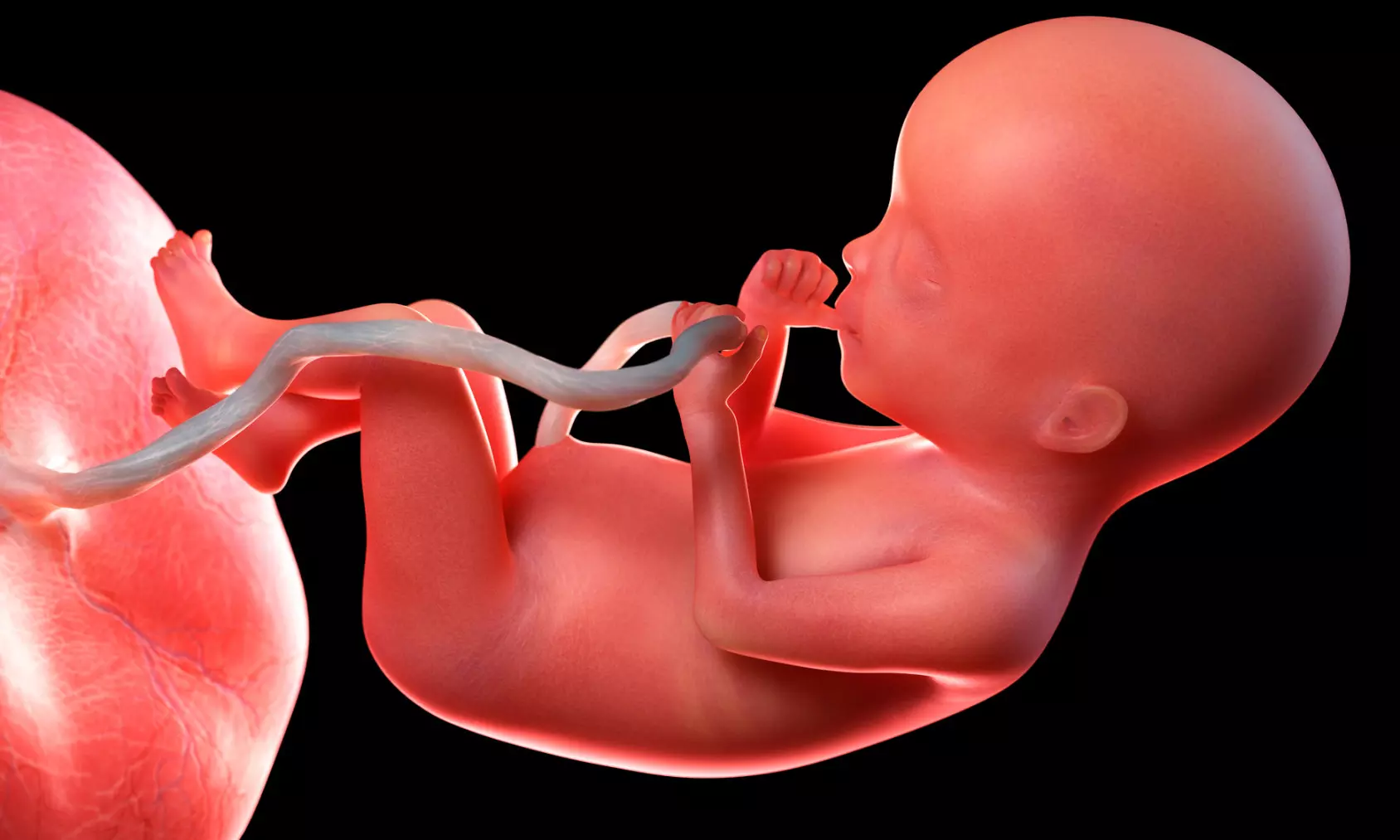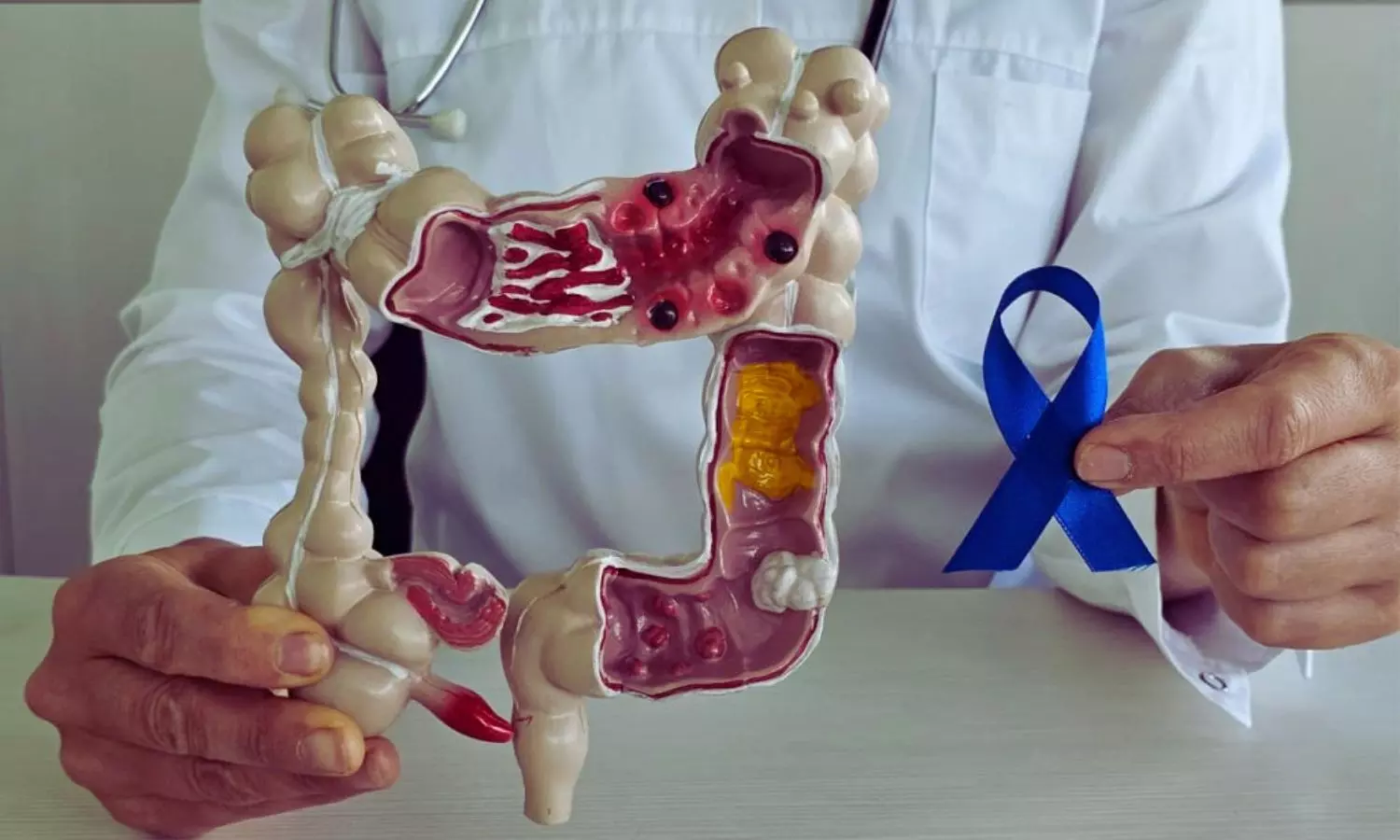How to tackle the ‘profound and lasting impact’ of COVID-19 on cardiovascular health
Powered by WPeMatico
Powered by WPeMatico
Powered by WPeMatico
Powered by WPeMatico
Powered by WPeMatico

India: A new study published in the Archives of Public Health sheds light on the growing burden of chronic lung diseases—Asthma and Chronic Obstructive Pulmonary Disease (COPD)—among India’s middle-aged and elderly populations. Conducted by Aditi Chakraborty and colleagues from the Department of Biostatistics and Epidemiology, International Institute for Population Sciences, Mumbai, the study reveals how social, individual, and household factors influence the prevalence of these conditions and their association with age-related health complications.
Using data from the first wave of the Longitudinal Ageing Study in India (LASI), the research offers the first nationally representative estimates of Asthma and COPD among individuals aged 45 years and above. The findings indicate that 4.38% of the surveyed population reported Asthma, while 2.1% had COPD.
The study revealed the following findings:
“The research highlights the dual burden of chronic respiratory diseases and functional impairments in India’s ageing population,” the authors note. They call for an integrated healthcare approach that addresses both respiratory health and age-related syndromes.
Despite its insights, the study acknowledges limitations, including its reliance on self-reported data and its cross-sectional nature, which limit causal inference. The authors recommend future studies using longitudinal data and clinical diagnostics to better understand these associations over time.
“The study emphasizes the urgent need for targeted public health strategies that combine respiratory care with geriatric support. Strengthening health education, improving access to age- and gender-sensitive healthcare, enhancing diagnostic services, and mitigating household risk factors like indoor pollution and tobacco exposure are vital steps toward promoting healthy ageing in India,” the authors concluded.
Reference:
Chakraborty, A., Yadav, S. & Kumar, A.H.S.A. Chronic lung diseases (Asthma and COPD) among middle-aged and older populations in India: social, individual, and household determinants and their associations with geriatric syndromes. Arch Public Health 83, 186 (2025). https://doi.org/10.1186/s13690-025-01675-4
Powered by WPeMatico

Integrating extra-uterine placental transfusion (EUPT) and intact-cord stabilization (ICS) during cesarean sections (CS) poses significant advantages for both term and preterm infants, facilitating smoother physiological transitions to extra-uterine life. Recent Research identified a critical need for delayed cord clamping (DCC), as it has been linked to reductions in intraventricular hemorrhage, anemia, and neurodevelopmental deficits in various studies. However, the standard practice of cutting the umbilical cord immediately often complicates infant stabilization, particularly in emergency or preterm CS where equipment is not readily accessible at the operating table.
Protocol Development Challenges
The intervention aimed to develop a protocol for EUPT paired with ICS and physiology-based cord clamping (PBCC), rooted in a systematic literature review revealing a lack of robust existing evidence for the efficacy and feasibility of these methods in CS. Obstacles to implementing such practices typically revolve around maintaining sterility and preventing maternal blood loss while ensuring effective neonatal resuscitation.
Pilot Testing Logistics and Training
Pilot testing involved assessing logistics, workflow, and the clinical environment necessary to employ this new approach. A systematic training of involved personnel through simulation sessions helped identify key challenges— including maintaining sterile technique amidst the complexities of CS, managing infant temperature to avert hypothermia, and communication between the surgical team and neonatal staff. Notably, the application of a dry-electrode ECG device (NeoBeat™) allowed enhanced heart rate monitoring, though it raised concerns regarding sterility.
Data Collection and Outcomes
Data collected indicated that EUPT and ICS were successfully completed in 26 out of 29 cases, though time frames for placental delivery and cord clamping sometimes exceeded set criteria. Mean arterial blood volume transfer from placenta to infant varied, indicating that the timing for intervention measures can be significantly inconsistent during actual clinical circumstances, thus necessitating further adjustments.
Implications and Future Directions
The findings suggest that while the protocol is functionally feasible and does not compromise either maternal or infant safety significantly, there are numerous procedural refinements needed to optimize workflow. Staff feedback from pilot testing emphasized the importance of managing the surgical environment to maintain sterility while ensuring effective stabilization of the infant. The study underscores the potential of EUPT and ICS to enhance neonatal outcomes during CS, though larger scale studies are required for conclusive evidence, particularly concerning preterm infants.
Key Points
– EUPT and ICS integration during cesarean sections improves physiological transition for both term and preterm infants, while standard immediate cord clamping often complicates infant stabilization, particularly in emergency cases or when equipment is not readily available.
– Development of a protocol for EUPT and ICS, along with PBCC, faces challenges such as maintaining maternal sterility and preventing blood loss while ensuring effective neonatal resuscitation, reflecting a current gap in robust evidence regarding their feasibility in cesarean section contexts.
– Pilot testing revealed specific logistical challenges, necessitating a systematic approach to training personnel. Key issues identified included maintaining sterility amid surgical processes, preventing infant hypothermia, and ensuring effective communication between surgical and neonatal teams.
– Successful implementation of EUPT and ICS was recorded in 26 of 29 cases, but the variability in arterial blood volume transfer timing highlighted inconsistencies and the need for protocol adjustments to achieve targets in clinical environments.
– Feedback from trial participants indicated that while the protocol’s feasibility was evident and did not significantly compromise safety for mothers or infants, further refinements are essential to streamline workflow and maintain sterile conditions.
– The study points towards the significant potential of EUPT and ICS to improve neonatal outcomes during cesarean sections, underscoring the need for larger-scale research to validate findings, particularly in the context of preterm infants.
Reference –
Elisabeth Saether et al. (2025). Extra-Uterine Placental Transfusion And Intact-Cord Stabilisation Of Infants In Caesarean Sections: An Intervention Development And Pilot-Study (INTACT-1). *BMC Pregnancy And Childbirth*, 25. https://doi.org/10.1186/s12884-025-07641-w.
Powered by WPeMatico

Poland: A recent prospective study published in the International Journal of Colorectal Disease has revealed that using PET/MRI instead of conventional imaging can substantially improve the diagnosis, treatment planning, and overall outcomes for patients with rectal cancer. The research shows that this hybrid imaging method provides superior accuracy in detecting lymph node involvement and tumor deposits, key factors in determining therapy.
Powered by WPeMatico

Recent study aimed to explore the impact of verbal communication on the consciousness level, pain, and agitation of anesthetized patients admitted to the intensive care unit (ICU). The researchers conducted a double-blind randomized controlled trial with 70 anesthetized patients in an ICU setting in Iran.
Methodology
The patients were randomly assigned to an intervention group that received verbal communication twice daily for 10 days, and a control group that received routine ICU care without verbal communication. The researchers used validated tools to measure the patients’ level of consciousness (Glasgow Coma Scale), pain (Behavioral Pain Scale), and agitation (Richmond Agitation-Sedation Scale) before and after the intervention.
Results
The results showed that the intervention group experienced a significant improvement in consciousness level, reduction in pain, and decrease in agitation compared to the control group over the 10-day period. Before the intervention, there were significant differences between the groups in consciousness level and agitation, but not in pain. After the intervention, the trends over time revealed that the verbal communication group had greater improvements in all three outcomes compared to the control group.
Conclusion and Implications
The researchers suggest that the simplicity and cost-effectiveness of the verbal communication intervention make it a valuable nursing practice to facilitate the recovery process and enhance the quality of care for anesthetized ICU patients. However, they acknowledge the need for larger studies to confirm these findings, given the small sample size and potential confounding variables inherent in the unique ICU patient population. Overall, the study provides evidence that structured verbal communication by nurses can positively impact the clinical status of sedated, critically ill patients.
Key Points
Here are the 6 key points from the research paper:
1. The study explored the impact of verbal communication on the consciousness level, pain, and agitation of anesthetized patients in the intensive care unit (ICU).
2. The study used a double-blind randomized controlled trial design with 70 anesthetized ICU patients in Iran, divided into an intervention group that received verbal communication twice daily for 10 days and a control group that received routine ICU care.
3. The researchers used validated tools to measure the patients’ level of consciousness, pain, and agitation before and after the intervention.
4. The results showed that the intervention group experienced significant improvements in consciousness level, reduction in pain, and decrease in agitation compared to the control group over the 10-day period.
5. The researchers suggest that the verbal communication intervention is a simple and cost-effective nursing practice that can facilitate the recovery process and enhance the quality of care for anesthetized ICU patients.
6. The researchers acknowledge the need for larger studies to confirm these findings, given the small sample size and potential confounding variables in the unique ICU patient population.
Reference –
Ali Talebi et al. (2025). Effect Of Nurse’S Verbal Communication On The Level Of Consciousness, Pain, And Agitation In Anesthetized Patients Admitted To The Intensive Care Unit: A Double-Blind Clinical Trial. *BMC Anesthesiology*, 25. https://doi.org/10.1186/s12871-025-03071-5.
Powered by WPeMatico

In utero exposure to two liquid ingredients in e-cigarettes – minus the nicotine that drives addiction – can alter skull shape during fetal development, a new study in mice has found.
In a series of experiments, pregnant mice were exposed to a combination of two liquids used to create vaping’s throat hit and smoke plume. Compared to two other experimental conditions, the offspring of mothers exposed to a specific ratio of these compounds weighed less and were born with narrowed facial features and shortened skulls.
The finding was surprising to researchers not only because no nicotine was present, but because the ratio of chemicals that produced the skull defect was designed by the e-cigarette industry to be a safer available option than the proportions in earlier products.
“This had no nicotine, and it’s still having effects on the development of the skull in our model, which was not anything we expected,” said lead study author James Cray, professor of anatomy in The Ohio State University College of Medicine.
The research was published recently in the journal PLOS One.
Cray’s developmental biology lab has studied the effects of in utero exposure to nicotine on head and face development for years, reporting in 2020 that exposure to nicotine through breastmilk caused skull defects in mice. About 3% of babies are born annually with a birth defect, according to the Centers for Disease Control and Prevention, and alterations to the head and neck are among the most common – particularly cleft lip and/or cleft palate.
In this study, the team was developing a model to serve as an experimental control for comparison to animals exposed in utero to nicotine through vaping.
Pregnant mice were exposed to either filtered free air or two humectants – hydrating substances that function as carriers of other e-cigarette contents – at differing concentrations: 50% each of propylene glycol and glycerol (also called vegetable glycerin), or 30% propylene glycol and 70% glycerol (30/70 PG/VG).
Because propylene glycol in e-cigarettes has been linked to increasing uptake of nicotine, Cray said, “a lot of companies have moved toward getting away from a high percentage of propylene glycol toward more glycerol, trying to position this as a safer alternative.”
Female mice were exposed to these three different conditions at a rate of one puff per minute, four hours per day on five days each week during the roughly 20-day pregnancy.
The cranial width and height of mouse pup skulls were scanned two weeks after birth. The analysis showed statistically significant reduced measures in the offspring of pregnant mice exposed to the presumed safer 30/70 PG/VG mixture compared to mice exposed to free air and the 50/50 formula.
“What we see is a consistent narrowing of all of the facial features, and the same thing as we move back into the cranium as well. So globally they’re narrower and a little bit shorter-headed, which does mimic some observable changes that we see in children,” Cray said. “We also saw a bit of a reduction in weight. These animals were within the normal range of an animal that age, but they still weighed less.”
The findings were consistent across several litters of mice and in both biological sexes.
“The 50/50 mixture had no dramatic statistical changes – and that’s where we were looking for the difference. We thought heavier propylene glycol should be causing more effects, and it was the exact opposite,” Cray said.
The Food and Drug Administration began regulating electronic nicotine delivery systems in 2016, but has faced legal pushback from e-cigarette companies – which prevailed in a June 20 U.S. Supreme Court ruling that makes it easier to sue the FDA over efforts to block products from the market. In April, the court sided with the FDA’s crackdown on sweet-flavored products after a major increase in teen vaping.
Though researchers continue to study the health effects of multiple ingredients detected in e-cigarettes, many unknowns remain as the products grow in popularity.
“The majority of users are young adults and teenagers, so we are talking about people who are in peak reproductive years. And with development of the head happening very early in fetal development, people could be using these products and not even realize that they are pregnant, which is of great concern,” Cray said.
“This is a small study that speaks to the possibility that nicotine-free vaping is not safe. And it’s a sign that we probably should study the nicotine-free products as much as we study the nicotine-laden products.”
Reference:
Ethan Richlak,Logan Shope,Ethan Leonard,Leslie Sewell,Tyler Maykovich,Amr Mohi,Roy A. Miller,Matthew W. Gorr,Loren E. Wold, In utero exposure to electronic cigarette carriers alters craniofacial morphology, PLOS One, https://doi.org/10.1371/journal.pone.0327190
Powered by WPeMatico

Australia: Researchers have found in a new study that frequent intake of artificially sweetened beverages during pregnancy was associated with an 88% increased risk of gestational diabetes.
Powered by WPeMatico
